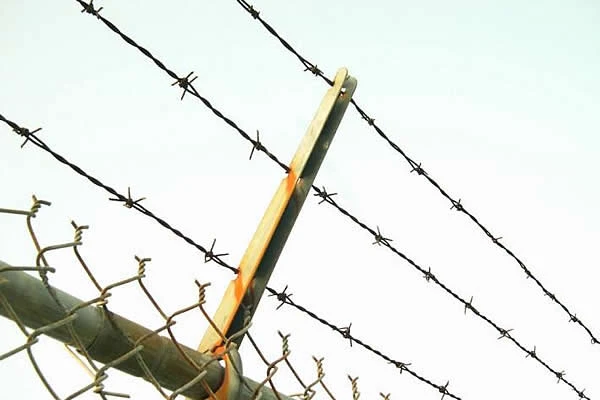 TEL:
+86-13102802206
TEL:
+86-13102802206
 Email:
fencenetting@china.com
Email:
fencenetting@china.com
 Language
Language
 TEL:
+86-13102802206
TEL:
+86-13102802206
 Email:
fencenetting@china.com
Email:
fencenetting@china.com
 Language
Language


Welding Cast Iron with Stainless Steel Wire Techniques and Considerations
Welding cast iron is a specialized task that can prove challenging due to the material's inherent properties, such as high carbon content and brittleness. However, utilizing stainless steel wire for welding cast iron can create strong, corrosion-resistant joints. This article explores the methods, advantages, and considerations when welding cast iron using stainless steel wire.
Understanding Cast Iron and Its Challenges in Welding
Cast iron is known for its excellent casting properties, wear resistance, and machinability. However, the same attributes that make cast iron desirable can complicate welding. Cast iron is prone to cracking during the welding process because of its high carbon content and low ductility. Additionally, the thermal conductivity of cast iron can lead to rapid heat dissipation, causing unequal heating and strengthening of the weld joint.
When considering welding cast iron with stainless steel wire, it is essential to recognize the differences between the two materials. Stainless steel typically has a lower carbon content and higher ductility compared to cast iron. These differences necessitate specific techniques to ensure a successful weld.
Selecting the Right Stainless Steel Wire
Choosing the appropriate stainless steel welding wire is crucial. The most commonly used types for welding cast iron include ER308L and ER309L. ER308L, austenitic stainless steel, is often used for welding 300 series stainless steel, while ER309L is better suited for applications involving dissimilar metals, like cast iron and stainless steel. The latter provides better filler material qualities and resistance to cracking.
Welding Techniques
1. Preheating Before starting the welding process, preheating the cast iron component is a critical step. This reduces thermal shock and minimizes the risk of cracking. Preheating can be achieved by using a propane torch or oven, typically achieving temperatures of 200°F to 600°F (93°C to 316°C), depending on the thickness of the cast iron.

2. Thin Layers When welding, it is advisable to apply thin layers of weld metal rather than thick beads. This technique allows the heat to penetrate the cast iron gradually, reducing the thermal gradient and stress in the welded joint.
3. Interpass Temperature Control Maintaining an appropriate interpass temperature is critical. If the temperature drops too low between weld passes, it can lead to cracking. A range of 200°F to 300°F (93°C to 149°C) is typically recommended.
4. Cooling Controlled cooling post-welding is essential to prevent stress cracking. Allowing the welded piece to cool slowly in a sand or ceramic blanket can help absorb the heat and avoid rapid temperature changes.
Post-Weld Treatment
After welding, some post-weld treatment may be necessary to relieve stresses and prevent cracking. This can include stress relieving through controlled heating and cooling cycles, or even machining the weld area to refine the joint's structural integrity.
Advantages of Welding Cast Iron with Stainless Steel Wire
Welding cast iron with stainless steel wire provides several advantages. The resulting weld is generally more ductile and offers better corrosion resistance than traditional cast iron welds. This makes it an ideal solution for applications exposed to harsh environments, like automotive and marine sectors. Moreover, the use of stainless steel can also improve the overall strength of the welded joint, extending the life of machinery and equipment.
Conclusion
Welding cast iron with stainless steel wire, while challenging, can yield robust results when executed correctly. Understanding the distinct properties of cast iron and the selected stainless steel wire is vital in achieving strong, durable welds. By employing techniques such as preheating, thin layers, and controlled cooling, welders can successfully navigate the challenges associated with combining these two materials. Ultimately, this approach not only enhances the performance of cast iron components but also opens the door for innovative applications where corrosion resistance and strength are paramount.